Sheikah, Gerudo, Goron, Zora, Kokiri, Deku, Korogu, Minish, Rito and more: here are the peoples of The Legend of Zelda, between races and ethnic groups
Welcome back to our usual Sunday appointment to wait together The Legend of Zelda: Tears of The Kingdomthis time dedicated to races, ethnicities and peoples of Hyrule. In the first part of this series we outlined the birth of the game world in its creation, straddling local history and folklore. Then last week we talked about all the games before Breath of the Wild, specifically mentioning a period of civil war among the people who populate the “Land of the Gods”. Now, always with our trusty Hyrule Encyclopedia in hand, let’s try to understand the cultures of this wonderful fantasy world.
If in the last episode we opened everything with a spoiler alert, however, here we begin with a dutiful clarification. We were initially conflicted, especially with the culture of respect that is making its way into the real world (and there is a great need), in using the term “race”. The colorful people that inhabit Hyrule are mostly made up of creatures from human featuresbut beings also find a place among them amphibians like the Zoras, bird-men like the Ritos and even anthropomorphic plants such as Deku and Korogu. There is everything, which is why we have opted to take advantage of this term as well.
Sheikah – Zelda: Road to Tears of the Kingdom (parte 3: razze, etnie e popoli)
Among the peoples who have joined the Hylia (first episode) in inhabiting Hyrule, there are no more representative ethnic groups than Japan (where The Legend of Zelda was born) than Sheikah, perhaps one of the most loyal races to the royal family. The tribe of shadows has handed down its servile role towards the high offices of the kingdom from generation to generation, with the undoubted complicity of motor skills capable of making them the ideal bodyguards. They too practice magic, but virtually only royalty know of their existence. This ninja equivalent operates in total secrecy as the true “shadows of Hyrule”.
In addition to serving as a secret service in times of war (declining in numbers in times of peace, if they are long), the Sheikah they guard the secrets of the royal family. The latter range from the Shrine of Shadows of Ocarina of Time (which appears to have been a capital punishment facility in the past) to the custody of the Triforce. In particular Impa (common name for prominent women in the bloodline, below) brought Zelda with her during Ganondorf’s coup. Her namesake ancestor in Skyward Sword acted at the behest of the goddess, while her namesake descendant in Breath of the Wild heads the Calbaric village, hidden from the eyes of most. The Sheikah’s technological progress in the open-world duology is shrouded in mystery.
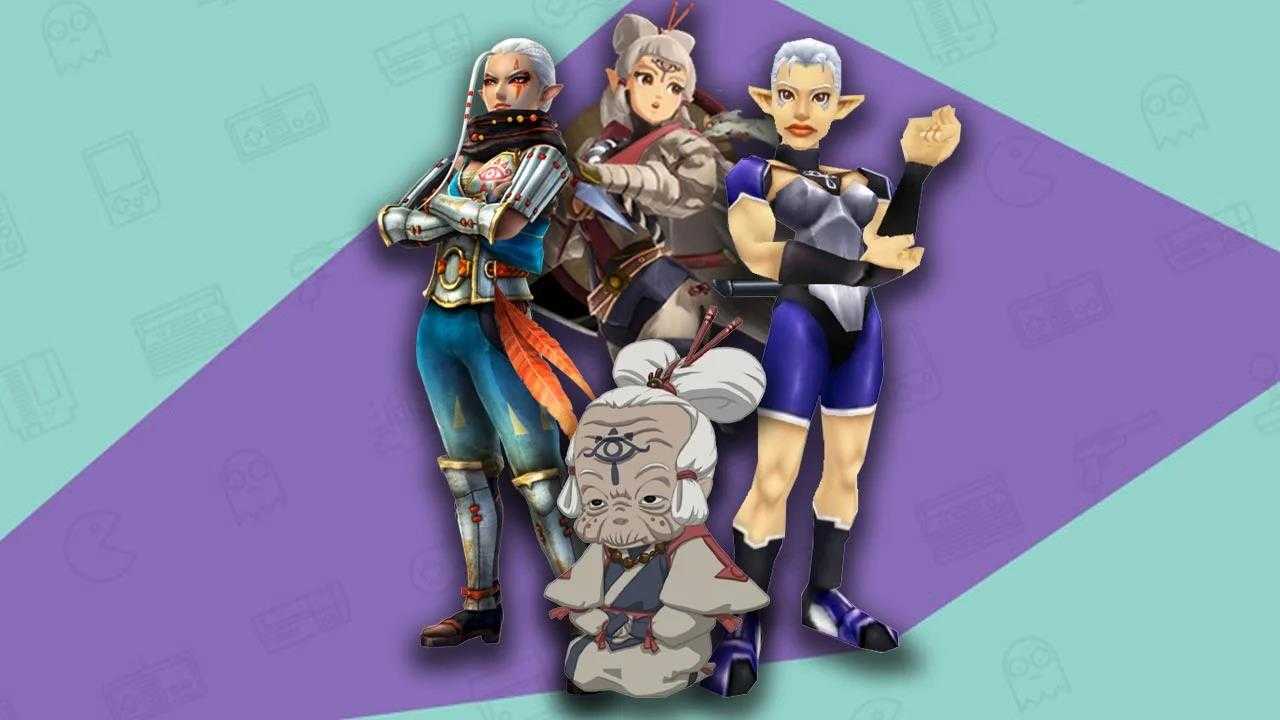
Gerudo – Zelda: Road to Tears of the Kingdom (part 3: races, ethnicities and peoples)
The people of Gerudo, the noble thieves, is composed almost entirely of women. The one man born every hundred years automatically becomes its king. Gerudos tend to leave the desert they live in only when looking for a mate; otherwise, they willingly remain in their area, whose alternation between torrid heat during the day and icy cold at night has tempered their spirits. Theft is a key element of their survival, but they have a culture of horse riding and archery among their assets. Courtship is usually the only purpose behind their travels to the city of Hyrule. Usually.
Hostile intention only came under the command of Ganondorf, having been indoctrinated into command shortly before the events of Ocarina of Time. Following his abandonment of the Gerudo Valley, he is his shoulder Naburu to take the lead. Unfortunately for her, Ganondorf’s guardians You, Kotake (over 100 years old thanks to what everyone believes to be magic) force her with brainwashing to support her king (below, left) even in betrayal of the crown. After the witches’ protégé is executed in Twilight Princess, the Gerudos distance themselves from Ganondorf… literally, relocating to the Desert of Doubt in Four Swords Adventures. The descendant Urbosa (Breath of the Wild, right) openly condemns Ganondorf’s cruelty.
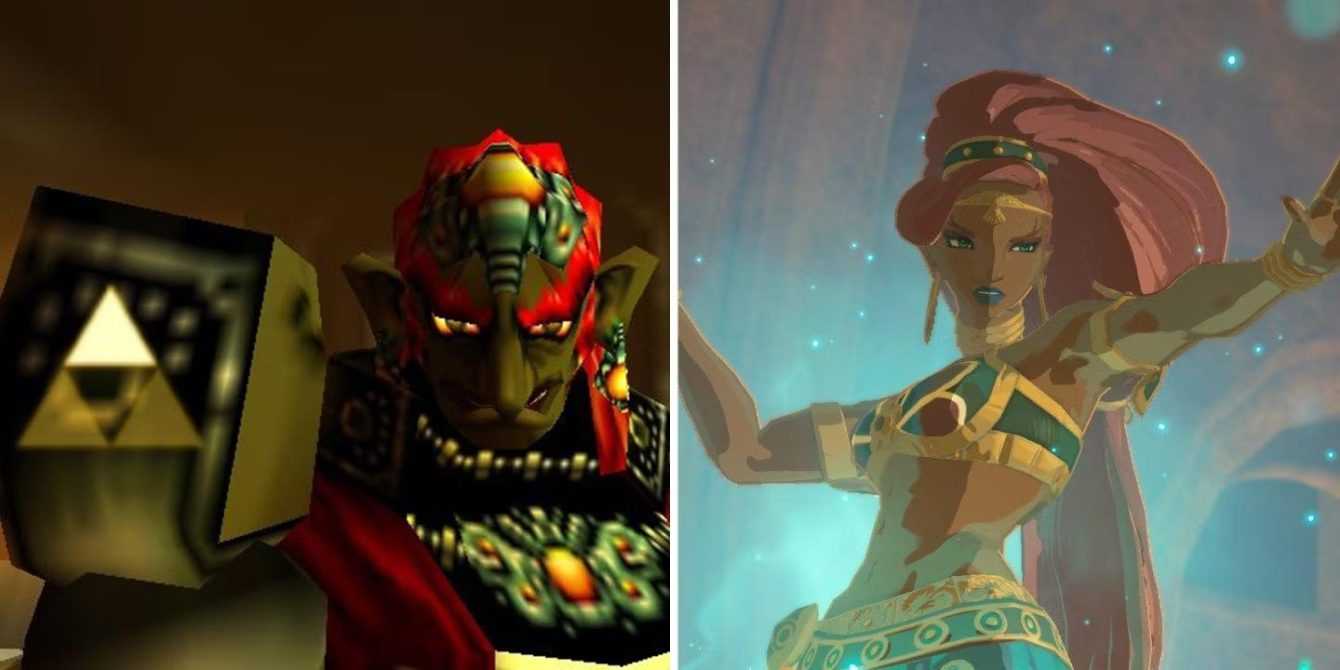
Goron – Zelda: Road to Tears of the Kingdom (parte 3: razze, etnie e popoli)
Being rockmen who feed on other rocks (not sentient, hopefully) i Crown they are one of the oldest peoples in Hyrule. Like the Sheikah, the Gorons also have a very close relationship with the royal family. They are known for their bulk, tough skin, and even more leathery mane that runs from the head to the backside. Shorter legs than arms seem like a handicap, but Gorons use this to protect their faces when they curl up to roll. For their diet, they tend to dwell near active volcanoes. Despite the zest, they are a peaceful people.
They work as blacksmiths and arms dealers, but they also enjoy themselves as dancers, as well as resting in hot springs and practicing sumo. Their tattoos have no cultural significance; they paint their rocky bodies for fashion. They are also good at adapting to the worst of conditions: after the Great Flood in the adult hero’s timeline, for example, they searched for a new land to dwell for a few generations by moving by sea. They succeeded in New Hyrule. The most representative members of this race are the chief Darunia in Ocarina of Time (below in Hyrule Warriors) the hero Darmani III in Majora’s Mask e Cranesone of the Champions of Breath of the Wild.
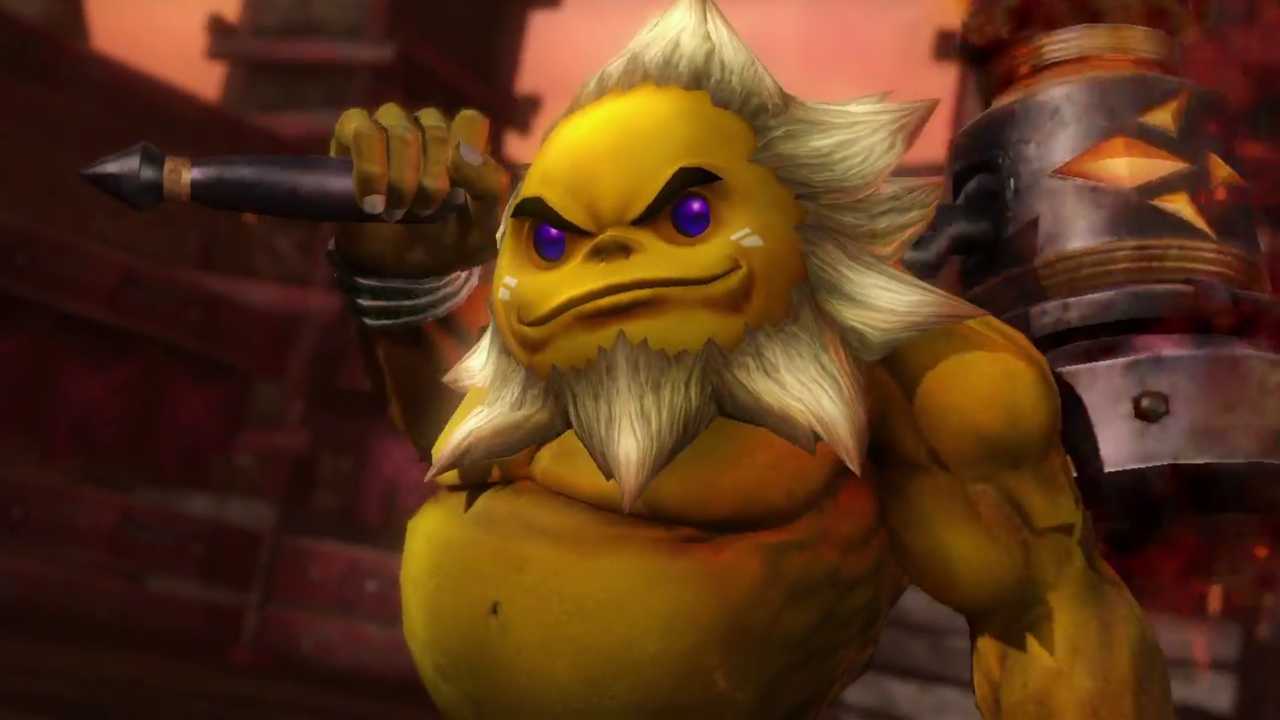
Zora – Zelda: Road to Tears of the Kingdom (parte 3: razze, etnie e popoli)
Just as the Gorons are bound to the land, the Zora they live in water. These cross-human-amphibian hybrids boast scaly skin and fins on their limbs, as well as feed on fish. They usually live in fresh water, but some are also found in the open ocean. They are dutiful to their duty, but usually loyal only to themselves. In their village, in fact, the only Hylia allowed are the messengers of the royal family. Their partnership with the Hylia degenerates into the Ages of Decline, as seen in games set in the timeline of the defeated hero (in which they are enemies of the player). Their women are often elected to sages.
Among the most significant Zora we find Ruto in Ocarina of Time, who has been in love with Link since she was a child. The infatuation repeats, eons later, with Give me against the protagonist of Breath of the Wild. The only benevolent Zoras of ruined Hyrule are seen in A Link Between Worlds, where the Regina Oren tries to lead his people towards the ancient glories. Sadly, half of his people are dissidents who attack both the protagonist and the other Zoras. In the world of Termina, the band Indigo-Go (below) entertains the audience despite the imminent apocalypse, but as is the case with all the “playable” members of the game’s ethnicities, the guitarist Miku dies during the events of Majora’s Mask.
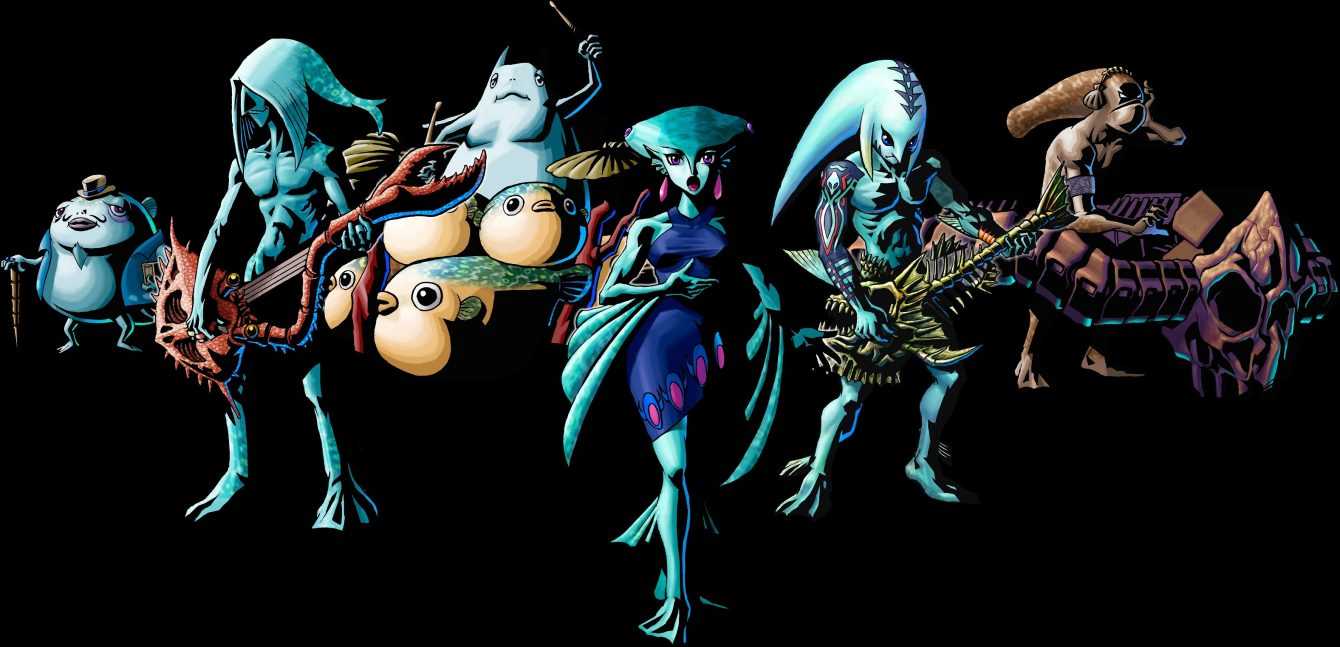
Kokiri – Zelda: Road to Tears of the Kingdom (parte 3: razze, etnie e popoli)
Closing the circle opened by Link’s green tunic inspired by Peter Pan, that of Go ahead it is a people of eternal children. They live in the forest, under the protection of Great Deku Tree. They share the same choice of clothing, but it is not their only tradition. Obtaining a fairy companion is also an initiation rite for them. Ironically, this has earned the Kokiri the nickname “forest fairies” by the only other ethnicity to be aware of their existence: the Hylia. The irony comes from the fact that the Kokiri is, both heraldically and literally, a stock of the ancient Hylia. The Kokiri symbol appears on Child Link’s shield.
They broke away from the rest of their people during the time the latter were engaging in urbanization. The Kokiri, for their part, prefer to stay in harmony with nature. From this also comes their belief, according to which they would die far from the forest. The reality is much simpler: it is the Great Deku Tree that prevents them from aging. Some time after the events of Ocarina of Time, with the birth of the child of the tree they began to venture away from their native branches. The bully Mido (below, center), along with Prize (Link’s childhood friend), is the Kokiri symbol of Ocarina of Time, while the descendant Fado names Macorè as his successor in The Wind Waker.
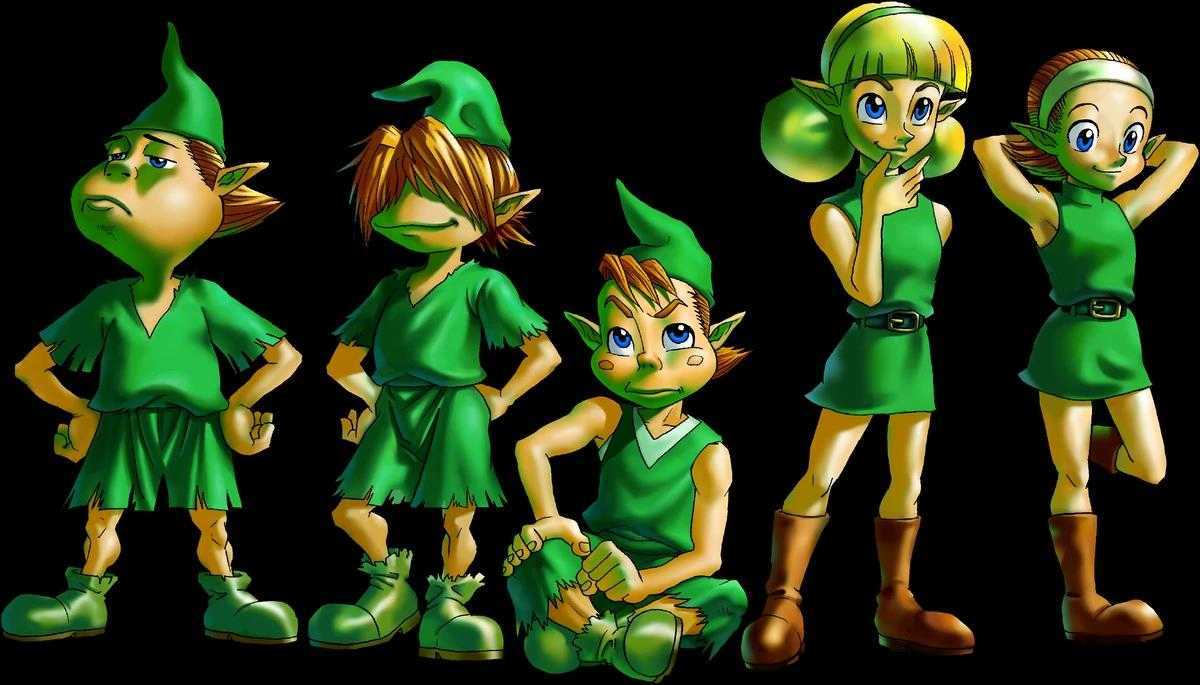
Deku and Deku Bush – Zelda: Road to Tears of the Kingdom (Part 3: Races, Ethnicities and Peoples)
The Great Deku Tree is a benevolent entity, but for the race Deku it is a real white fly. As a rule, i Deku bushes it’s the stinkers that cause only trouble in forests and swampy areas. They too are inhabitants of the fronds, but unlike the spirits of the forest like the Kokiri they are full-blown monsters. All of them boast glowing eyes, round mouths, and bodies made of nut shells covered in foliage. Deku Bushes are shy of other beings. They live hidden underground, spitting seeds at anyone who has the unfortunate idea to approach them.
Despite their hostile nature, some Deku specimens make a living as traders, usually dealing with the Hylia. The character depends on the tree from which a Deku has sprouted. Despite their vegetative reproduction, this species can thrive under the right conditions. This is in fact the case for the kingdom established by some Deku in Termina, visited by Link during his excursion to cascabosco in Majora’s Mask. Unfortunately for the royal family who dwell in the Palazzo Deku (below), however, a child belonging to their entourage has passed away at the beginning of the game, when the lost child (Skull Kid) forces his face onto the protagonist.
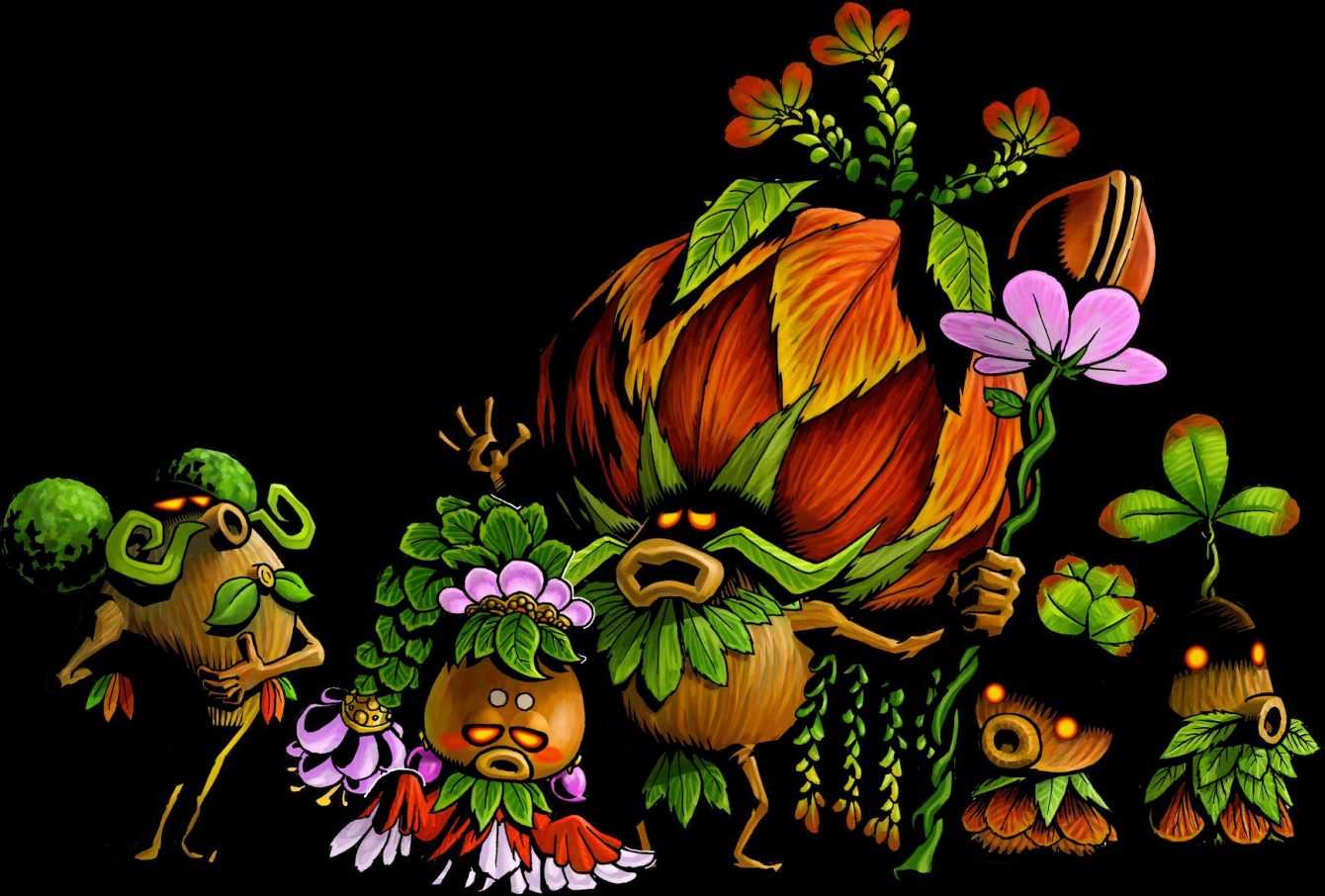
Korogu – Zelda: Road to Tears of the Kingdom (parte 3: razze, etnie e popoli)
I Korogu they are the spirits of the forest and can be recognized by the leaves that cover (or, one might say, make up) their face. They are first seen in The Wind Waker where the Deku Tree of the Archipelago of the Woods guides them. They tend to make a woody rattling noise when they walk, having woody bodies themselves. The primary mission of this people is only one, as well as unique in the noble intent: that of obtaining seeds from the Deku Tree every year, with which to cover the islands of the whole world with forests. An intent, this, that tends towards the tragic if one thinks of their origins.
Actually the Korogu are descended from the Kokiri. Since the world of The Wind Waker is set after the great flood that drowned ancient Hyrule, the Kokiri had to adapt, thus ending up developing the gift of flying on the waves to reach other islands. Testifying to the relationship between Kokiri and Korogu, one of the latter race’s best-known members is Macore, which we mentioned a few paragraphs ago. However, in more recent titles, the Korogu are mostly known for the plethora of secret objectives that are littered across the entire map of…






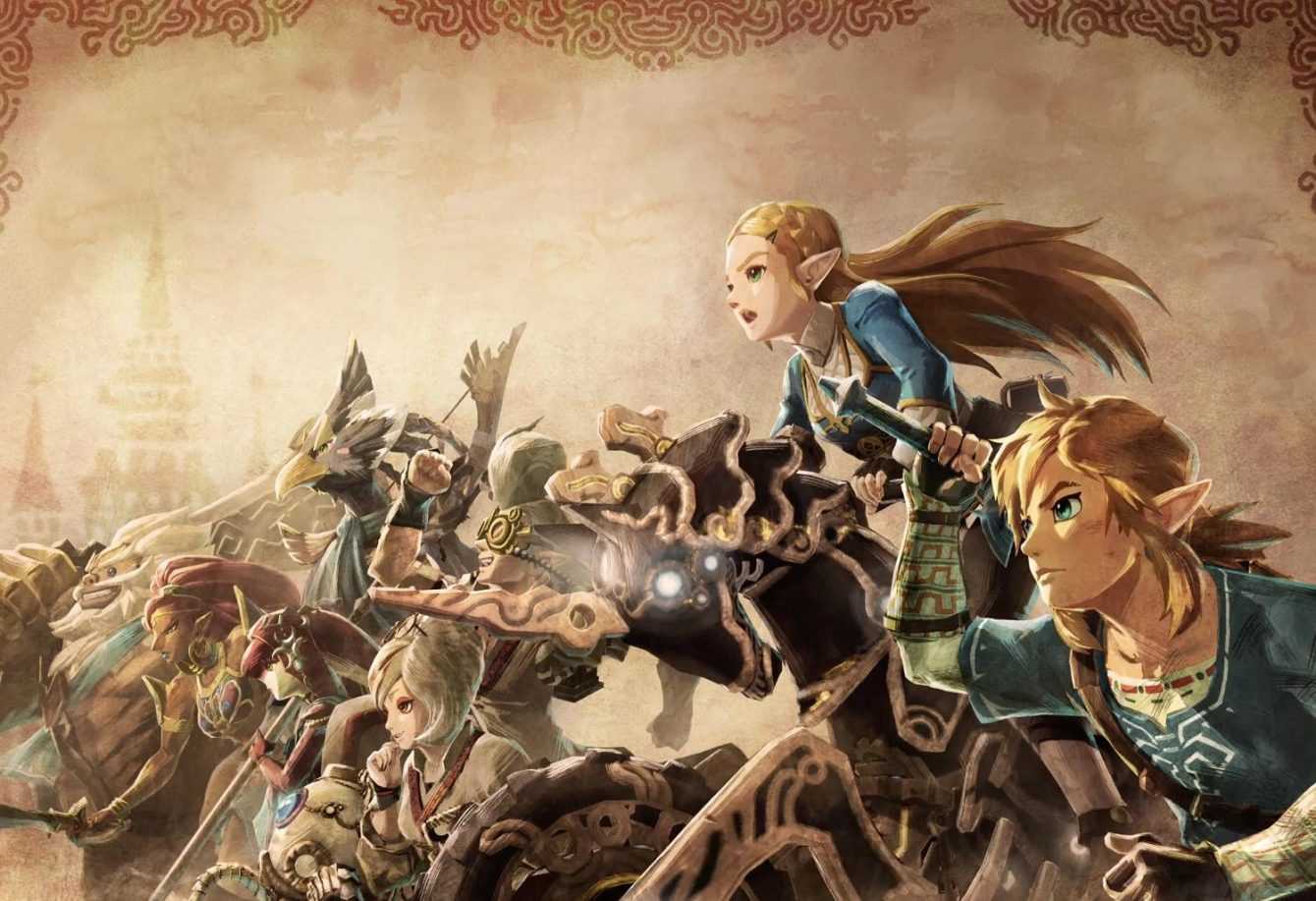






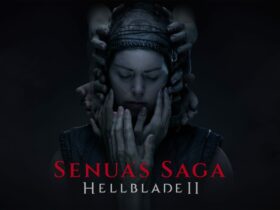


Leave a Reply
View Comments